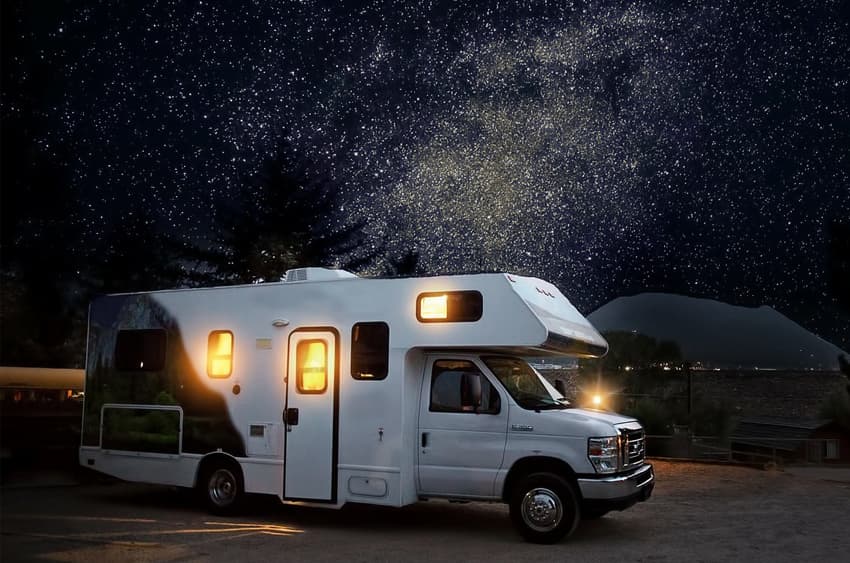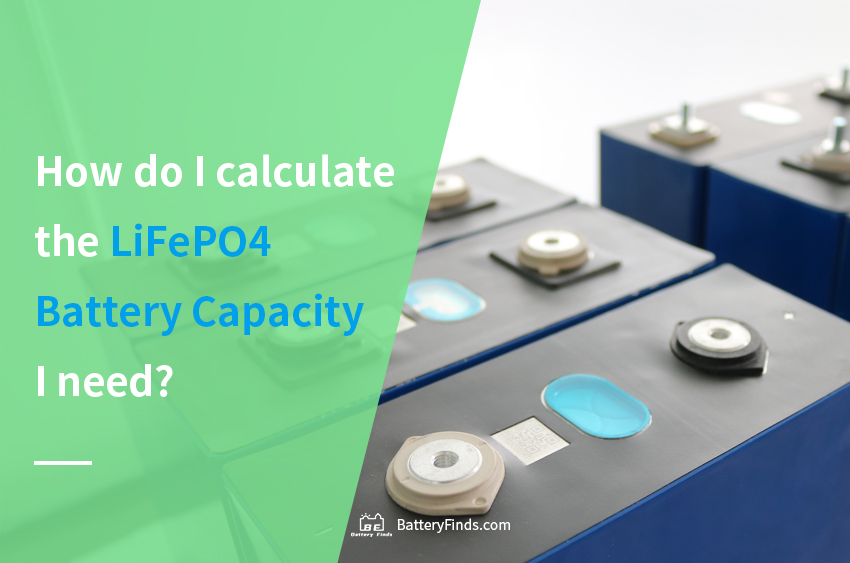When purchasing and using LiFePO4 batteries, one problem that cannot be avoided is the LiFePO4 battery capacity. In the LiFePO4 battery market, there are actually many types of products. Different brands have launched batteries with different capacities. How to choose? The more central question may be, how much LiFePO4 battery capacity do I need to support my load?
How to calculate the required LiFePO4 Battery Capacity when used for Home Energy Storage?

Home energy storage is probably the most popular use for LiFePO4 batteries. In the past, people would suffer silently during power outages or use lead-acid batteries/generators for temporary power, but today LiFePO4 batteries have become the best replacement for lead-acid batteries, considering the 10-year of battery cycle life, LiFePO4 battery is even the most cost-effective household energy storage battery.
It is very simple to calculate the required LiFePO4 battery capacity, but a simple calculation is required. The voltage of the LiFePO4 battery is 3.2V, so the energy of the whole battery is voltage * capacity. There are generally two ways to calculate the amount of electricity required for home energy storage:
1. Refer directly to the electricity bill. This is the easiest way, because the local electrical grid is very professional in calculating your electricity bill, and it is impossible to calculate less. After all, you have never seen the electrical grid charge you less money. In this way, as long as you follow the local electricity price, you can easily get all the electricity you use for a period of time (usually a month). This electricity is measured in kilowatt-hours (KWh), and this is the LiFePO4 battery capacity you can refer to.
But this has the disadvantage that there is no way to know the electricity consumed by a specific appliance, which may not be suitable if you plan to use partial energy storage.
2. Check the nameplate of your appliance. Most of the electrical appliances will have a nameplate, and the nameplate will indicate the power of the electrical appliance. After knowing the power, the calculation is very simple. The energy required by each appliance is power * hours. Do the calculations for all of your appliances that use energy storage and you’ll get a fairly accurate number.
This method is more comprehensive and can also be used in off-grid cabins. But you need to do calculations, and you also need to read the nameplates of different electrical appliances, which may consume some of your time and energy.
It’s important to note that most LiFePO4 batteries have a recommended DOD (Deep of Discharge) of 80%, which means that if you want to maximize your battery life, you may need to stock up on LiFePO4 batteries that consume 20% more power than you actually use, a simple example would be If you need 5KWh of home energy storage, then your LiFePO4 battery may have a capacity of 6KWh. Of course, if the battery manufacturer clearly states that it supports 100% DOD, then there is no need to worry about this problem.
How to calculate the required LiFePO4 Battery Capacity when used for other Purposes?

In addition to household energy storage, LiFePO4 batteries are also widely used in other fields, such as RV, EV (electric vehicles), marine ships, electric trucks, electric bicycles, electric scooters, signal base stations, DIY equipment, etc. In some of these uses, the calculation method will be slightly different.
For example, RVs, most of the batteries currently carried by RVs are still lead-acid batteries, and only some relatively advanced RVs will be equipped with LiFePO4 batteries. The main reason is that the upfront cost of LiFePO4 batteries is actually very high, and it is difficult to gain market recognition as a standard for production. In addition, the RV is a relatively durable model. Many people have purchased the RV a long time ago, and in the past, there was no LiFePO4 battery suitable for the RV.
In fact, there is basically no need to calculate for RV. If you intend to maintain the use of the standard electrical appliances of the original car, then directly refer to the capacity of the lead-acid battery and replace it. It should be noted that the voltage of the lead-acid battery is 2.1V, and only supports around 50% DOD. Therefore, when deciding to upgrade it to a LiFePO4 battery, a simple calculation can be performed to avoid excess energy.
But if the battery upgrade is to allow the RV to use more appliances, then refer to point 2 above, look for the nameplate of each appliance and do the calculations, and finally you can get the result. Likewise, DOD issues should be considered to avoid excess or lack of energy.
The same logic applies to marine ships. However, it should be noted that when the marine ship uses LiFePO4 batteries, it is necessary to add a waterproof casing to prevent water seepage.
It is also worth mentioning that some usage scenarios with limited space, such as electric bicycles, may need to use multiple small-capacity LiFePO4 batteries compressed and connected to form a battery pack, because large-capacity single cells may be used due to their size and properties. Lead-acid batteries cannot be replaced directly. Of course, if you want to increase the battery life to a greater extent, you need to consider the LiFePO4 battery capacity and volume.
Summary
The calculation of LiFePO4 battery capacity can be very simple or very complicated. It is not too difficult to simply calculate the required capacity, but the problem we cannot avoid is that our load is also changing all the time, so we cannot back up all electrical appliances in a whole family, because that’s unrealistic, it will cause energy waste, because not all appliances need to run during a power outage; also, part of the power backup also has certain fluctuations, because it may be that you need to use the computer in this power outage, but you need to use the next power outage washing machine… So when considering how much LiFePO4 battery capacity is needed, be sure to think more calmly.

